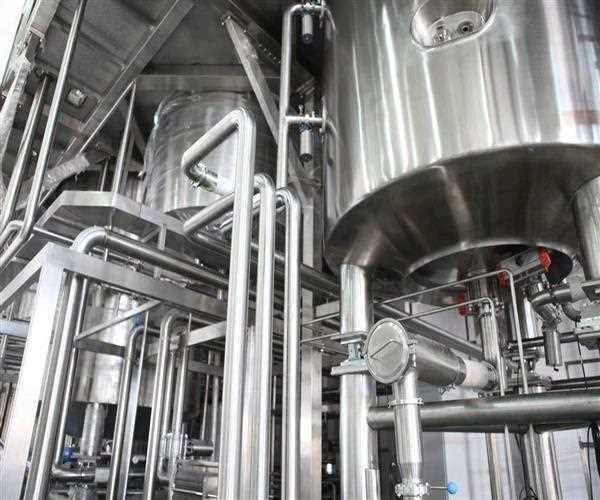In the industrial sector, mixing and blending process is the key to manufacture products. It has been a need for manufacturers to have an industrial blender machine to cope with the competitive production. These industrial blenders and mixers provide increase production rate, ease of cleaning, flexibility, and the reliability of the homogenous product.
Through the years, the mixing and blending process has been innovated effectively to address supply and demand. Let us know more about the mixing and blending process in the industry, and how the industrial machines were innovated through time.
The Difference Between Mixing and Blending
Sometimes, the terms blending and mixing are interchanged. However, there is a slight difference between the two terms. Mixing is the process of putting together different materials and thoroughly combining them to produce a homogenous mixture. Meanwhile, in the blending process, materials are also combined but through a gentle process.
Poor mixing badly affects product quality. The product becomes heterogenous affecting the color, reactivity, particle size, and chemical composition. Over blending has grave consequences too. It leads to the separation of the ingredients and it has air or liquid increasing its viscosity.
Primary Mechanism of Blending
Generally, blender machines are designed for solid to solid blending with additional amounts of liquid in order to produce a homogenous product.
Convection blending involves the gross movement of the ingredients through the mixer by forcing it through a paddle or by gently tumbling it under the rotational effects. Meanwhile, diffusion in blending is at a slow pace. It should be carefully utilized as it may pace the process. Lastly, the shear mechanism involves a thorough mixing of ingredients that pass along a forced slip plane.
Most industries that need blending machines are pharmaceutical, food and beverage, water treatment, biocides, detergents, plastics, crop protection, and the like. Blender machines have been a great help for our economy to grow.
Common Types of Industrial Blender Machine
Tumbler Blenders
The tumbler blender is mainly used in the pharmaceutical and food industry. It has an advanced feature of close-quality control, efficient convection, and diffusive mechanism of blending. It has a double-con configuration with asymmetrical features that reduce the blending period and improves blend uniformity. It has an impressive speed of twenty-five revolutions per minute and it can fill 50 percent to 75 percent level.
Convection Blenders
Convection blenders have fixed shell sheltering an impeller. The impeller internally rotates rapidly making the particles move rapidly from one location to another within the mixture. It is best for cohesive materials. Some of the advantages of this type of blender are it takes up a lesser headroom, allows to add liquid, and can handle continuous operations.
Hopper Blenders
Hopper blenders are either cone-in-cone or tube-type units. It is where the ingredients flow under the influence of gravity in a method of contact bed. The blender allows a moderate blending of material by providing a faster flow of the ingredients from the inner cone to the inner hopper. For the hopper blender to achieve the perfect uniformity it requires the mixture to pass through two to four times. Moreover, the blender can handle larger volumes as it has no freeboard space requirement.
Fluidization Mixers
The fluidization mixers use gases at a high flow rate to completely fluidize the powder to quickly blend the components. However, not all powder blends are suitable for fluidization mixing. The food industry mostly uses the fluidization mixer as it has a greater advantage for them. It helps the operator have control over their food processing. Fluidization helps the heating and cooling of food rapidly without overheating or spoiling the food.
How the Industrial Blender Machines Underwent Improvements
Since then, the industrial mixer and blender machines are the key component in the unit operations of a manufacturing company. The competition among manufacturers is one of the factors why these industrial blender machines underwent several improvements. One of the concerns before was the inability of the blender to be filled or discharged while mixing. The operator needs to wait for the remaining methods to complete the blending process.
Thus, the innovators addressed the insufficiency. Tumbler blenders with in-bin were developed, the bin is a storage container and at the same time a blender. The improvements in the industrial blender machine led to highly flexible production. It gives you the freedom to load the ingredients into the container.
Moreover, an additional advantage of the improved blender machine is an easy cleaning feature. It provides an ease to the operator and reduces contamination.
Ginhong is one of the leading industrial blender machine suppliers in China. Without a doubt, they can provide this kind of machine and technology.
Conclusion
In the industry, industrial blender machines and mixer machines are a great help in providing uniform and high-quality products. Moreover, it increases the production rate while decreasing the blending and mixing period. There may be a slight difference between the terms mixing and blending, yet they are the key process to every business industry. With the need and competition among manufacturers, industrial blender machines are improvised to avoid problems with uniformity.




Leave Comment